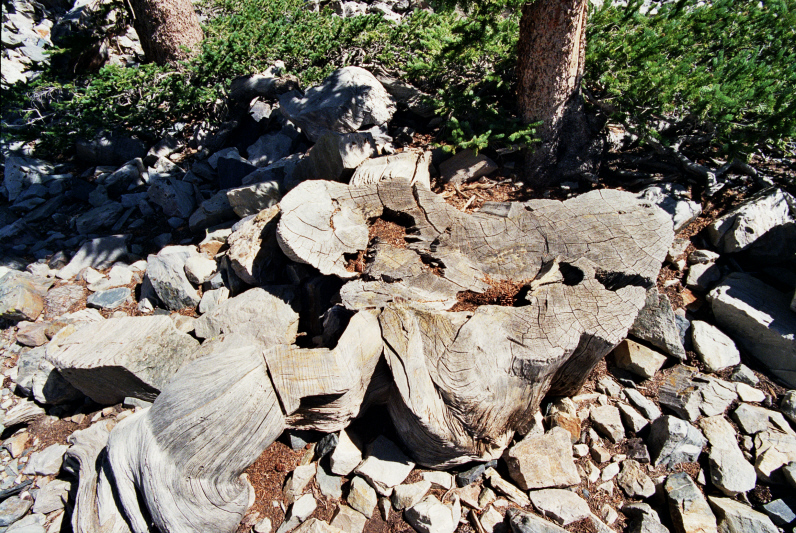
The Stump of Prometheus
Prometheus was the longest living non-clonal organism to have ever been found. It was a Great Basin Bristlecone Pine which grew in Wheeler Peak, Nevada, USA. The tree was estimated to at a minimum 4862 years old, which many estimates giving it an age over 5000. Unfortunately the tree was cut down by a graduate student in 1964. Donald R. Currey was the man who killed this tree while searching for old trees as a project, given the name WPN-114. Prometheus was a member of the bristlecone pine tree family and grew in an area of WHeeler Peak that was reachable only by off-trail hiking. The age was taken by ring count done at a trunk cross section about 8 feet above the original germination point because the rings below this section were missing.
The Cutting of the Tree…
Donald R. Currey was a graduate student at the University of North Carolina at Chapel Hill studying the climate dynamics of the Little Ice Age usingdendrochronology techniques. In 1963 he became aware of the bristlecone populations in the Snake Range in general, and on Wheeler Peak in particular. Based on the size, growth rate and growth forms of some of the trees he became convinced that some very old specimens existed on the mountain, cored some of them, and found trees exceeding 3,000 years old. However, Currey was not able to obtain a continuous series of overlapping cores from WPN-114. Here, stories diverge. It is not clear whether Currey requested, or Forest Service personnel suggested, that he cut down and section the tree in lieu of being able to core it. There is also some uncertainty as to why a core sample could not be obtained. One version has it that he broke or lodged his only long increment borer and could not obtain another before the end of the field season, another claims he broke two of them, while another implies that a core sample was too difficult to obtain and also would not provide as much definitive information as a full cross section of the tree would.